This CE Center article is no longer eligible for receiving credits.
Flooring is one of many parts of building design that is multifaceted. Choosing the right type of flooring for a project is important for both the overall interior design and long-term resistance to wear, but these considerations are only half the task. All floor coverings need to rest on something, and often it is the structure and materials below the visible surface that determine the success of a flooring installation. This course addresses each of these aspects of flooring design and specification: the visual design choices, the product options that influence the performance of the flooring, and some options for the structural support systems that can make such a significant difference.
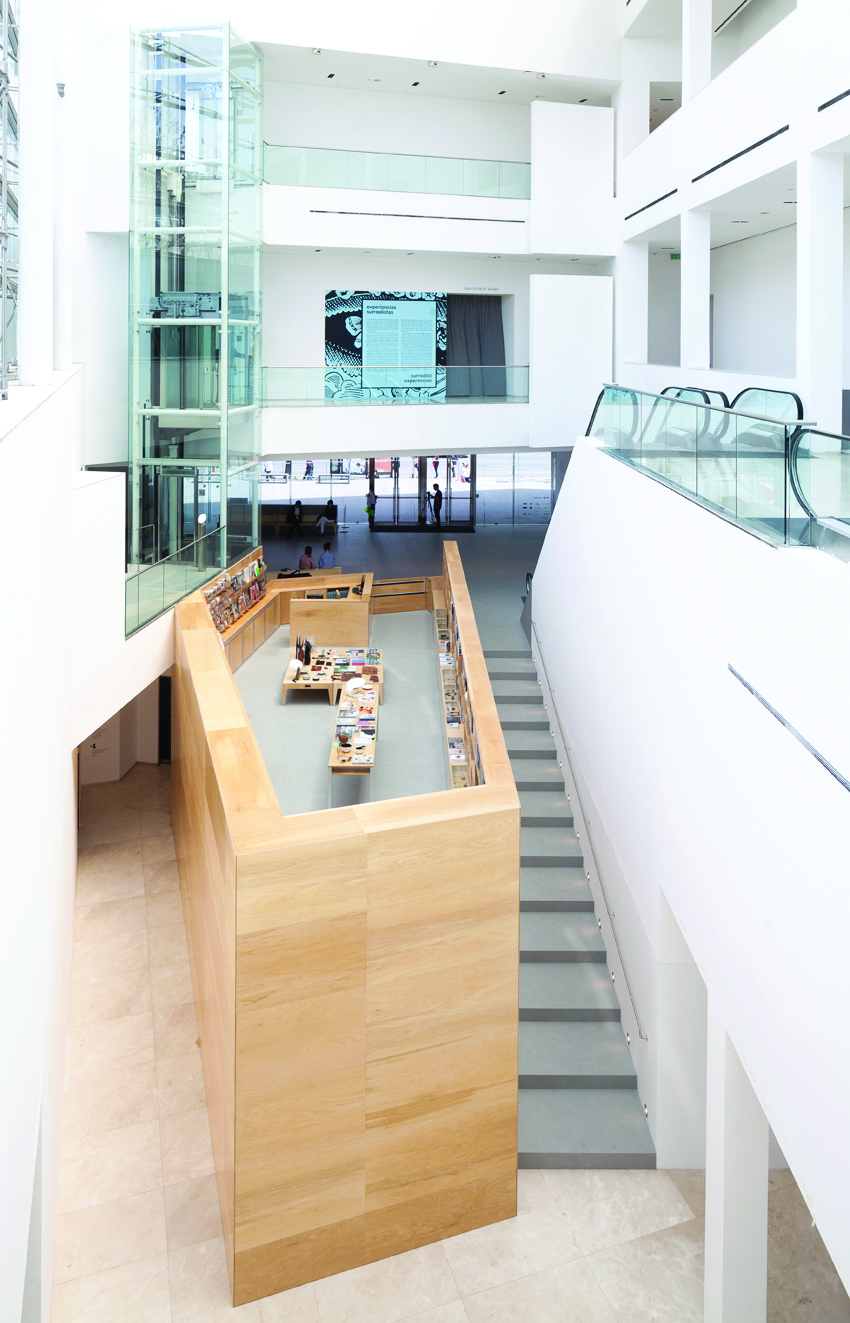
Photo courtesy of Neolith®
The design of interior spaces is affected directly by the flooring surfaces that are visible and equally by the surfaces underneath.
Design Considerations
The design of floors, particularly in multistory buildings, is a combination of understanding the structural design options, the choices of available flooring materials, and the best ways for them to two work together. We look at some of the design considerations of floor systems and floor coverings first.
Floor Structure
The structural floor system of a commercial building provides multiple attributes for a building. In addition to tying into the rest of the building structure, it creates a solid separation between building stories to prevent the passage of sound, air, light, and fire. It is also the platform or substrate that supports everything placed on the floor, including the finish flooring. As such, it can either create favorable conditions for the finish flooring to function or, alternatively, cause problems. In fact, most finish flooring problems come about not because of problems with the finish material itself but rather the material or structure underneath it. Therefore, the attributes of the structural floor system can directly affect the real or perceived attributes of the finish flooring, regardless of what is selected.
In many commercial, industrial, and institutional buildings, steel and concrete are commonly used to create the structural floor system. However, the selection of a specific type of steel or concrete floor system can greatly affect the overall performance outcomes of a construction project. There are a variety of types and range of capabilities of floor systems that can be both complex and versatile. The final selection can directly influence the unsupported span length, acoustic attributes, vibration control, and fire-resistance ratings. Further, the integration of mechanical, electrical, and plumbing systems and even the ultimate height of the building itself can be dictated by the structural floor system selected for a project.
There are at least three common structural floor system choices considered for many commercial buildings. The first is a conventional, lightweight system using steel girders, beams, or trusses to support a metal floor deck that is topped with concrete. This steel-based system is known for its speed of erection, lighter weight, and versatility. Second is an all reinforced concrete system, whether precast or poured-in-place, which is usually thinner in overall height compared to a steel floor system. However, all concrete systems need to be assessed for the amount of additional dead weight that they create compared to other systems. A third and innovative alternative is the use of long-span composite floor systems that combine the lighter weight and erection ease of steel with the strength and durability of concrete. They achieve a thin-slab advantage characterized by a narrow floor structure, longer unobstructed floor spans, and a range of under-floor aesthetic ceiling options.
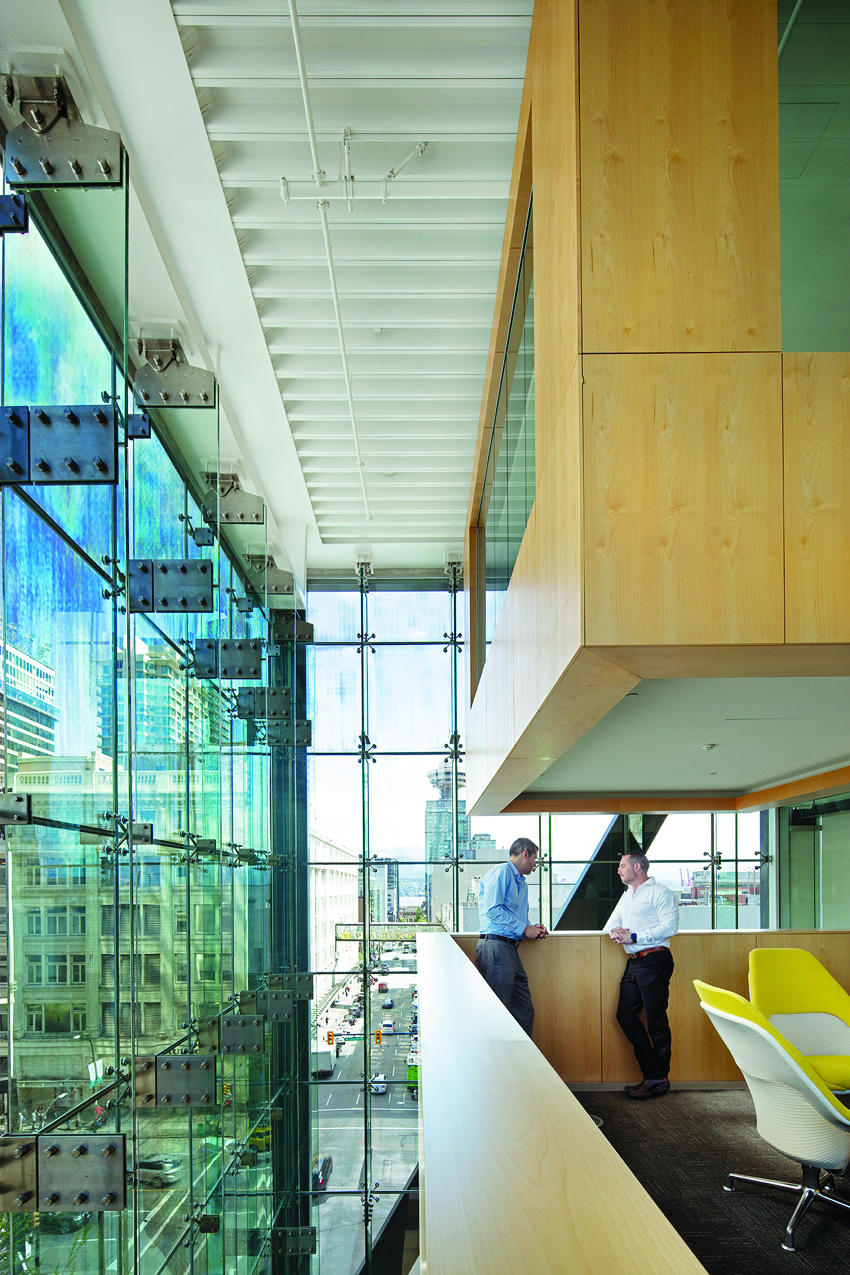
Photo courtesy of New Millennium Building Systems
Long-span composite floors blend in with the rest of the building construction and can create a finished ceiling appearance in addition to providing a strong, economical floor structure option.
Long-Span Composite Floor Systems
Composite floor systems not only provide economy for the structural system, but they also address the economy of room space, allowing for longer, unsupported spans. They also help by providing a finished ceiling design, including the efficient integration of acoustical treatments, controlled sound attenuation, and fire resistance. Long-span composite floor systems can weigh up to 40 percent less than comparably utilized cast-in-place concrete floors, provide fire-resistance ratings up to 4 hours, and achieve clear spans up to 36 feet.
All of these design attributes of composite flooring systems make them very well suited for a full range of new and renovation/retrofit building projects, including multistory residential, commercial, health-care facilities, parking garages, specialty platforms, and high-rise structures. From a budgeting standpoint, less steel and less weight in these composite systems contribute to lower overall project costs. As part of an integrated structural system, they can enhance the structural performance of the rest of the building, whether those other portions are based on steel, concrete, masonry, or framed bearing walls. Composite flooring systems can also be constructed faster, safer and more cost-effectively than alternative systems.
The flexibility and design attributes of a composite floor system can change the way architects and engineers view a project. The system is no longer just a floor—it is an evolved structural floor and ceiling system that is integral to better building design.
A recent hospital renovation project is a good example of how these systems can help provide better solutions. The design program called for wide, open floors designed to accommodate unique serviceability requirements. Thirty-three-foot spans between beams, combined with overhangs as long as 14 feet, provided a unique design challenge. The solution was found in a composite floor slab approach. Since the floor system also supported operating room equipment and an outboard curtain wall system, controlling deflection was a critical and successful function of the composite design. The long-span composite floor system was designed to address all of these unique project conditions, and it did so very well.
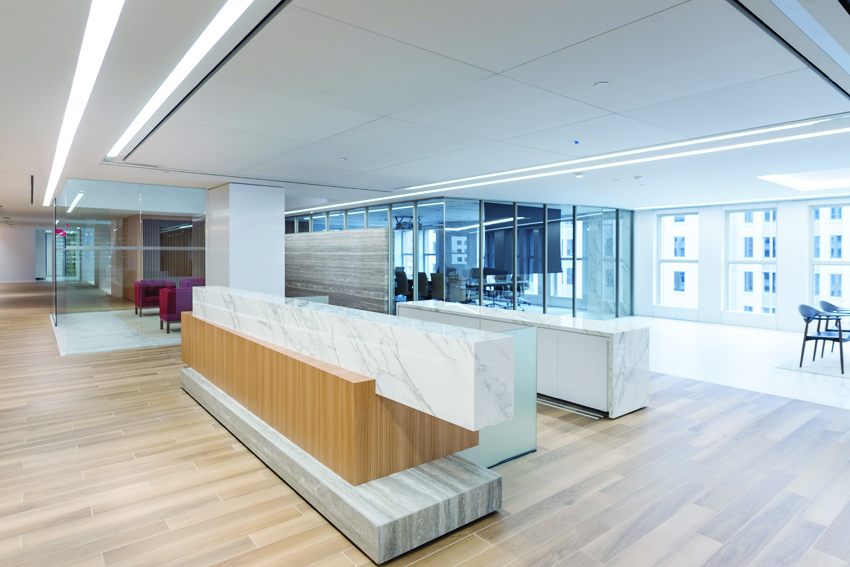
Photo courtesy of Neolith®
Sintered stone is a very durable, versatile flooring product that can also be used on other surfaces to provide the look of wood, stone, or tile.
Finish Flooring
The selection of a finish flooring to be applied over a floor structure is based on a variety of inputs and design criteria. The shape and size of an interior space will be a determinant of things like pattern, scaling, and visual presence of the flooring. The other surfaces in the spaces (such as walls, ceilings, etc.) will influence the choice of materials, colors, and textures used for flooring in the same space, either to extend a particular visual effect or complement the interior design. When considering what to select, there are often multiple choices to pick from in terms of flooring types, but ultimately it comes down to the judgment of the design professional to make the preferred recommendation. In that regard, it is always good to be up to date on relatively new materials that can meet a variety of design conditions and still perform well at a competitive cost.
An example of such a new material is called sintered stone. Sintering is a manufacturing process that uses natural mineral materials in powder form and processes them under heat and pressure to create a product similar to porcelain tile. However, the properties of sintered stone are generally superior to porcelain tile in that it is denser, which makes it stronger, more durable, and generally more resilient. In the case of sintered stone made for flooring products, minerals and other natural materials are ground into a powder and subjected to specific heat and pressure to produce a uniquely broad combination of design characteristics. Sintered stone flooring is resistant to stains, scratches, chemicals, and heat. Additionally, its high density makes it virtually waterproof—it has a porosity less than 0.09 percent, meaning no sealers are required. Those who maintain the building find the dense, nonporous surface easy to clean, including graffiti removal, so the appearance and color are maintained over time. It is even resistant to harsh chemicals.
From a purely design standpoint, sintered stone flooring can provide the look of other familiar materials, such as stone, tile, or wood, with surfaces that are either smooth or textured and available in a variety of colors and hues. Of particular interest to many designers, it is available in larger sizes than conventional porcelain or ceramic tile. Sintered stone product sizes range from 12-inch by 24-inch tiles up to 60-inch by 60-inch tiles, or full slabs that are 4 feet by 12 feet or 5 feet by 10.5 feet. Larger sizes mean minimal grout lines for more elegant visual designs and less concern about keeping those lines clean.
In addition to the variety of size formats, sintered stone is also available in different thicknesses. Because it is so dense, it can be manufactured down to a thin 1⁄8 inch, although 1⁄4-inch and 1⁄2-inch products are more commonly used. Regardless, the thinner, denser products are more lightweight, coming in at only 1.1–1.5 pounds per square foot for a 1⁄8-inch-thick panel. This lighter weight makes it ideal for renovation projects in addition to new construction. The floor slabs can be applied directly onto existing surfaces, eliminating the need for gut remodeling or costly tear-outs while reducing landfill waste.
The appearance and color of sintered stone is wide and varied with more than 50 full-body colorations and digitally enhanced patterns available, allowing design professionals to exercise full creative control over their projects. Depending on the manufacturer, sintered stone can be created to take on a highly accurate appearance of marble, granite, other stone, wood grain, or tile. For sizable projects, some manufacturers can work with designers on custom patterns and colorations to be used not only for flooring but also for walls, work surfaces, and other applications. This total combination of choices means that designers have a full palette of colors and appearances from which to choose.
When used specifically for floor surfaces, sintered stone is suitable for all types of spaces, from large hotel lobbies, to midsize retail or restaurant settings, to small residential or commercial bathrooms, and just about everything in between. The degree of wear resistance needed in any of these spaces can be accommodated by picking the proper thickness of sintered stone to suit the situation. The thickness choices can also help provide smooth transitions with adjacent floor finishes. Grand spaces can have thin sintered stone floors that look like marble, granite, or other dramatic stone. For restaurant and retail spaces, the colors and textures can be selected to complement the rest of the decor, creating spaces that are either bold and strong or soft and intimate depending on the situation. For bathroom and kitchen spaces, surfaces that look like marble or create contrasts of colors, including the creation of tubs and other items, can be designed to meet the intended results.
Once installed and in use, sintered stone flooring can be an ideal design solution for large-format tiling in high-traffic commercial and residential project applications. As a product solution, it overcomes some of the most common issues with traditional large-format tiles, including weight, expense, and installation difficulty.
Performance Considerations
Beyond the design aspects of floor systems and flooring, there are of course performance requirements that need to be met. Meeting different metrics for safety, structural integrity, durability, and other traits will naturally vary based on the flooring products and systems used. Therefore, it is always worthwhile to investigate the specific options available to determine which ones have the performance attributes that most closely match the needs of a particular project. We look at some examples of this process in the following sections.
Composite Floor System Performance
To understand the performance characteristics of long-span composite floors, it is important to remember that they function by using the best of each material as part of a hybrid system: the tensile strength of a corrugated metal deck and the compressive strength of reinforced concrete. Together, this system allows for longer spans that can eliminate the need for intermediate supports and create a single floor/ceiling assembly that allows for more economical and space-efficient floor-to-floor heights.
There are three common types of long-span composite floor structures on the market. These floor structures are optimal for low and mid-rise building designs because they are uniquely space- and cost-efficient. The three types of long-span composite floor systems are 1) composite joist, 2) deep-deck composite, and 3) dovetail composite. Each are described further as follows.
Composite joist floor systems: This system consists of an open-web steel joist that helps to support a corrugated metal deck above that is filled with concrete. Due to the additional truss support, composite joist floor systems offer the longest open-span floor structures, ranging from 20 feet to 60 feet and even beyond. These systems provide a structural floor that uses a lighter, shallower, and lower-cost design compared to concrete beams and wide flange steel beams but can be engineered to provide a very rigid surface with low vibrations.
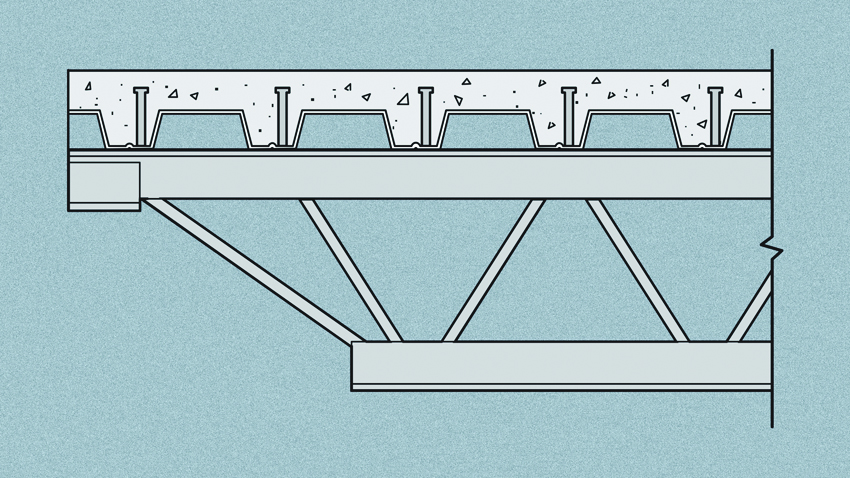
Image courtesy of New Millennium Building Systems
Composite joist floor systems support the longest unobstructed spans ranging up to 60 feet and beyond.
Due to the joist webbing, mechanical, electrical, and plumbing lines can be run through the open webs of each joist rather than being run under a solid beam or other structural components. This means that the ceiling can stay up closer to the floor structure, optimizing ceiling height in the space below.
Deep-deck composite floor systems: For floor systems that do not need the extra span capability of composite joists, deep-deck composite floor systems can be used, which eliminate the use of the open-web steel joists altogether. Deep-deck composite floors can support unobstructed floor spans in the midrange of many design needs, up to approximately 36 feet. This means that they are well suited for many buildings where open space and free-flowing interiors are sought. Three progressively deeper deck profiles are available, including 4.5 inches, 6 inches, and 7.5 inches, each with its own span capabilities. The specific thickness can be selected to meet engineering criteria relative to the actual project floor span or requirements for controlling floor depth. Other performance objectives such as fireproofing and sound control can also be met by selecting the proper thickness.
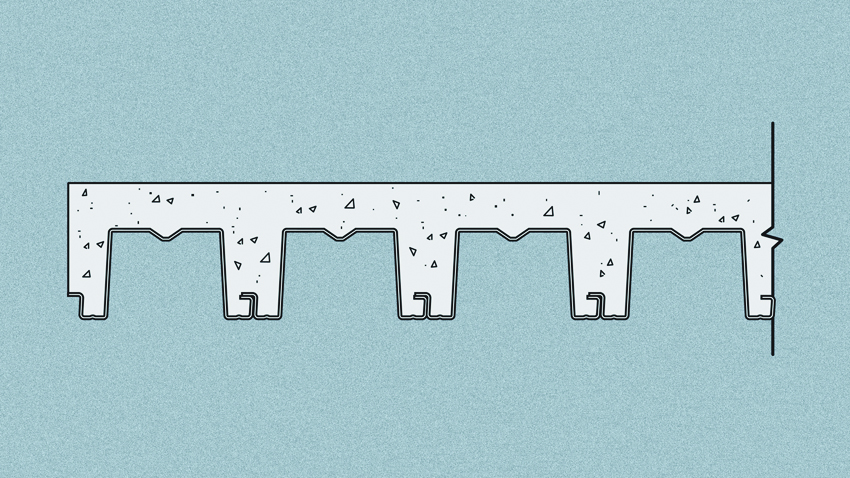
Image courtesy of New Millennium Building Systems
Deep-deck composite floor systems can span the midrange of up to 36 feet and can potentially be installed without shoring or support in spans up to 22 feet.
A unique feature of the deep-deck composite floor system is construction cost-efficiency. The deck sections can be side-lapped together on the ground by an installation crew using a fastening tool. When ready, the panelized sections can be crane lifted together into place, allowing the deck to provide double duty as a work platform for safer and more efficient pours. Further, deep-ribbed decking commonly has enough structural strength to be installed without any shoring or supports underneath it for spans up to 22 feet, thus offering faster and even more cost-effective construction.
Dovetail deck composite floor systems: The name of this floor system comes from the dovetail-shaped profile of the corrugated metal deck that receives the concrete and bonds firmly with it. This can provide extra rigidity and strength that allows finish flooring to function properly without fear of deflection or movement. Dovetail composite floor systems are available in 2-inch and 3.5-inch dovetail profiles, meaning this floor system offers the thinnest total floor depths. With a finished thickness as thin as 4 inches, this system can be used to reduce story heights and maximize ceiling heights. The thinner profiles do mean that they are best suited for shorter spans with the capability of supporting clear spans up to 28 feet. Nonetheless, the deck can serve as the finished ceiling too while allowing some smaller electrical and plumbing lines to be run in the dovetails and concealed from view.
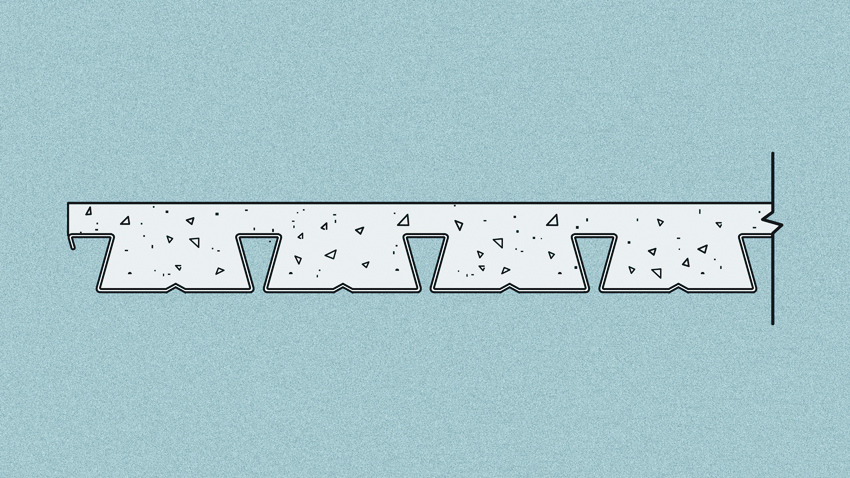
Image courtesy of New Millennium Building Systems
Dovetail deck composite floor systems can span up to 28 feet and provide a ceiling appearance with a smooth, linear plank aesthetic.
Dovetail deck composite floor systems can be particularly useful in mid-rise or multistory residential projects, such as hotels, health-care communities, and dormitories where structural walls between occupant units can support the floor deck without the need for intermediate supports. As such, it can be integrated with panelized cold-formed steel-stud wall systems or supported by structural beam and bearing-wall systems.
At least one manufacturer of all three of these composite floor systems can offer in-house engineering support to consult with project design teams. In this regard, it can advise on the appropriateness of the different system types and the specification options throughout the design process. For projects striving for more sustainability, the manufacturer can provide data showing that a long-span composite floor system can use up to 40 percent less concrete than poured-in-place concrete floors. As such, long-span composite floor systems align well with LEED v4 requirements because they support a holistic, long-term view of project performance and costs, both to the building owner and the environment. Additionally, they allow for open, unobstructed building spaces, making it easier for future interior layout changes or moves.
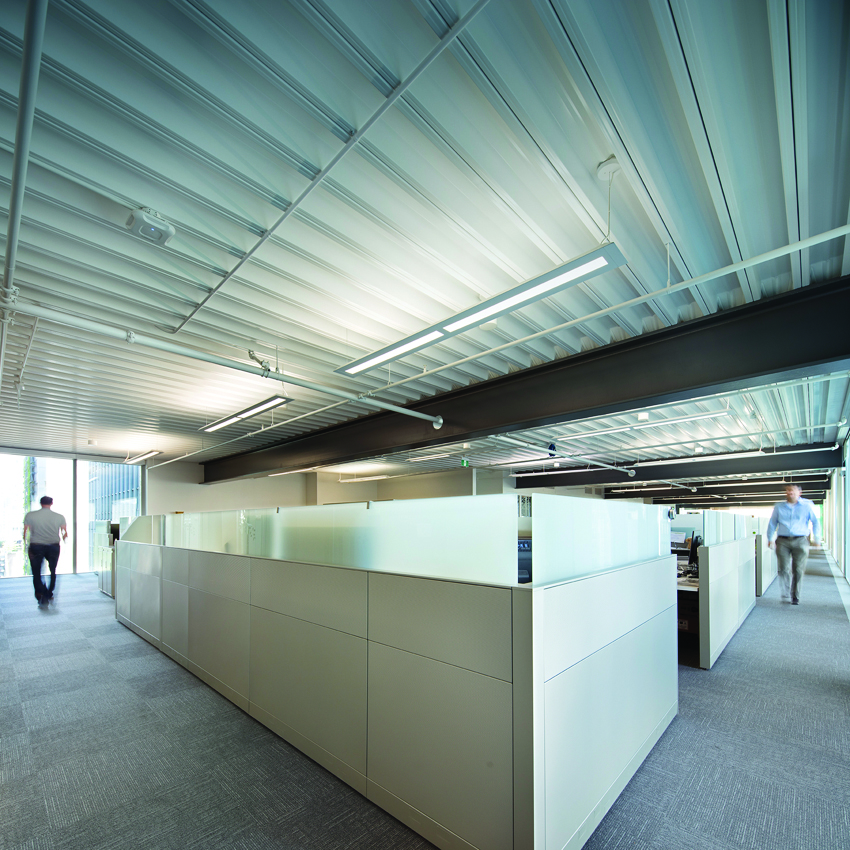
Photo courtesy of New Millennium Building Systems
The open floor plan and towering open spaces of this office project feature an attractive and economical deep-deck long-span composite floor system.
Economical and Forward-Thinking Floor Solutions
Project costs and environmental concerns weigh heavily on the minds of many building designers, and long-span composite floor system can help address these, notes Sean Smith, market development manager for New Millennium Building Systems. “A building’s shallower floor structure can contribute to a reduction in building height,” he explains. “A shorter building, even if it is merely a few feet shorter, can potentially save the owner hundreds of thousands of dollars on exterior cladding materials. The reduction in building material also equates to reduced impact on our environment. And keep in mind, structural steel can have a high amount of recycled content.”
A recent 20-story hotel project is a good example of this. It called for clear spans of 26 feet, one row of shoring, and acoustic and vibration testing. When considering the three types of long-span composite floors, the longer composite joist option was removed from consideration, leaving deep-ribbed composite floors and dovetail composite floors to consider. The decision to use 3.5-inch dovetail composite came down to one distinguishing factor: while meeting other requirements, the dovetail composite floor also presented a significantly thinner overall structural floor depth. When multiplied over the 20 floors of the building, the height reduction and corresponding savings on facade materials was significant.
Sintered Stone Flooring Performance
Once the performance of the subfloor is determined to be suitable, then the selection of the finished flooring can be addressed based on the flooring performance needs of the project. Sintered stone has become a flooring material of choice for architects, designers, specifiers, and fabricators not only because of its versatile and appealing design traits but also for its impressive performance characteristics. As such, it has been specified for the most demanding interior and exterior flooring application projects. It has been viewed as a premium option that balances high performance and aesthetic appeal with long-lasting, resilient products warrantied for up to 25 years.
As a material, we have already touched on some of the properties of sintered stone that impact its performance. Its density contributes to it being waterproof, hygienic, and resistant to scratches, heat, chemicals, and ultraviolet radiation. This exceptional resilience makes it ideal for high-traffic uses, such as flooring exposed to high footfall in busy public spaces. It is equally suitable for locations that may have less foot traffic but more potential for damage from harsh conditions, abrasive activities, or concern over vandalism.
Slip resistance: Sintered stone also addresses a common safety criterion for floors in public spaces; namely, the tested slip resistance of the flooring material. Up until 2014, the standard test was based on a static coefficient of friction (SCOF) following specific testing procedures developed by ASTM International. Since then, the new test standard has been based on a dynamic coefficient of friction (DCOF) that tests for slip resistance based on an object being already in motion—in other words, more closely aligned with a person walking along the floor. The industry standard for achieving appropriate slip resistance in flooring is a tested 0.42 DCOF. Since sintered stone products can be produced with different surface types, they can produce different DCOF ratings. Many, however, have been tested and shown to meet or exceed this safety test standard, making them very suitable for all types of flooring applications. They are particularly appealing for high-foot-traffic areas like lobbies and hallways, plus wet areas like swimming pools, bathrooms, and kitchens.

Photos courtesy of Neolith®
Sintered stone can be specified to meet needed slip resistance for flooring, which is particularly important in areas like swimming pools and stairs.
Interior stairs are another area where sintered stone has been used successfully, particularly where appearance, durability, and slip resistance are key criteria. In these situations, the sintered stone can be cut to cover the treads and risers and even integrate with adjacent walls, balusters, etc. Standard safety nosings can be incorporated as may be needed, or the material can be used to fully cover the stairs.
Installation: Sintered stone panels and slabs are available in large-format sizes requiring less labor and allowing for shorter installation times, thus making them cost-effective to install. Relatedly, they are easily fit into place using known site cutting and handling techniques for large-format tile. The cut and prepared pieces can then be installed using common thin-set application processes. Hence, while the material may be new to some, the process and procedures for installing it will be familiar to most experienced installers of large-format tile. This familiarity should help ensure that it performs as expected for its useful life in the building.
Before installing sintered stone flooring, the underlying subfloor or substrate needs to be flat and clean as with any large-format product. If the substrate planarity or level is out of allowable tolerances (e.g., more than 1/8 inch for every 10 feet), the substrate needs to be prepared or repaired and leveled to bring the substrate within tolerances. Even with that done, however, the likelihood that the subfloor is absolutely level is not always guaranteed. Therefore, it is important to address any remaining irregularities so they are not an issue once the flooring is installed. Self-leveling materials or isolation crack membranes are always recommended where those are appropriate to help ensure best results. In many cases, though, the best way to overcome a slightly irregular subfloor is by using a leveling system that consists of a combination of supports placed under the floor tiles and wedges inserted into the supports. This type of leveling system offers the advantages of 1) helping to lay a clean and level floor, 2) ensuring the floor tiles or slabs are more firmly joined to the adhesive for stronger and more long-lasting installations, 3) reducing the slab installation time, and 4) reducing the need to lift up the slabs again to add more adhesive.
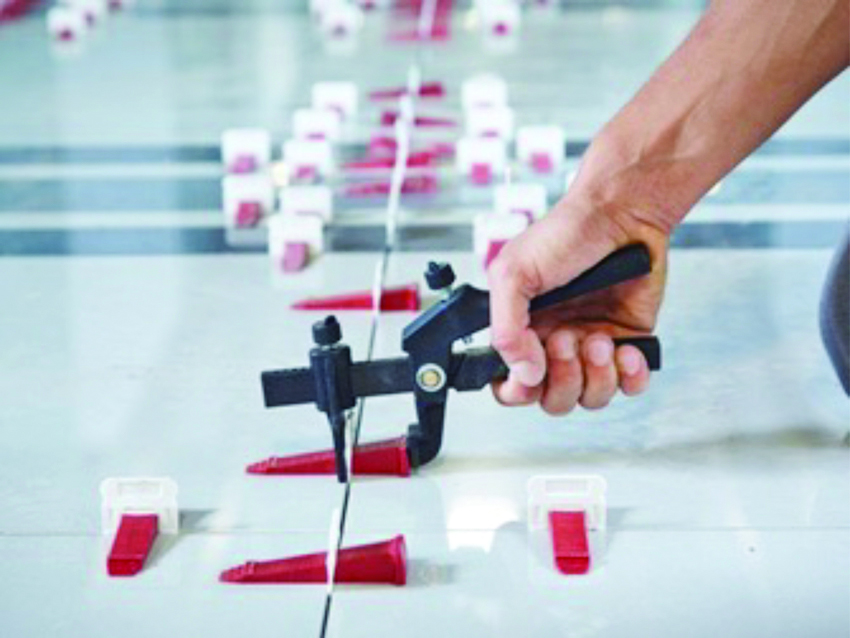
Photo courtesy of Neolith®
The best way to assure that a sintered stone or tile finished floor is level and flat is to use a leveling system that keeps the floor pieces aligned with each other.
The installation of this type of system often follows a three-step process—arranging the supports, inserting the wedges, and removing the supports—which is detailed as follows.
- Arranging the supports: After applying adhesive to the tile/slab, the leveling supports need to be inserted under the slab along all four sides. For large-format slabs, more than one clip along each side will be needed. Then the slab can be positioned in place as per the manufacturer’s recommendations.
- Insert the wedges: With the slab in place, the wedges can be inserted in the support grooves. This must be done carefully so as not to push the wedges beyond the fracture point.
- Remove the supports: After the adhesive sets, the supports can be removed by separating the part sticking out of the base support.
When used correctly, a leveling system will make installing large-format slabs easy work, with greater reliability and higher likelihood that it will perform as intended.
Among some other best practices for sintered stone flooring installation, thin-set mortar or adhesive should be applied to both the substrate and the sintered stone in a “double-buttering” method to ensure full adhesion. The material itself can be precut by the manufacturer or field cut using conventional cutting tools for tile. Either way, the manufacturer’s instructions and recommendations need to be followed for the proper handling, adhering, grouting, and joint work to achieve best results. After the grout is installed, the panels should be cleaned with a damp cloth to remove any excess grout, sealants, or other contaminants. Manufacturers will often provide some standard guidelines to help avoid installation mishaps.
Conclusion
Flooring is a significant interior design feature of a building. It provides a far-reaching aesthetic as part of an overall design concept. The floor structure is the place to start to ensure that best results are achieved. Long-span composite flooring systems have been shown to be ideal in many types of buildings, particularly when the economy of the structure is important. For finish flooring, sintered stone is becoming a product of choice for many building types. Its proven properties of being a natural, lightweight material available in many different colors and surface appearances is getting the attention of architects and interior designers. Its high-performance properties also make it an excellent choice for those concerned with long-term durability and life-cycle costs. Architects who consider how the subfloor structure and finish flooring work together, as presented in this course, can be more assured in the overall success of a total floor system.
Peter J. Arsenault, FAIA, NCARB, LEED AP, is a nationally known architect, consultant, continuing education presenter, and prolific author advancing building performance through better design. www.pjaarch.com, www.linkedin.com/in/pjaarch


























